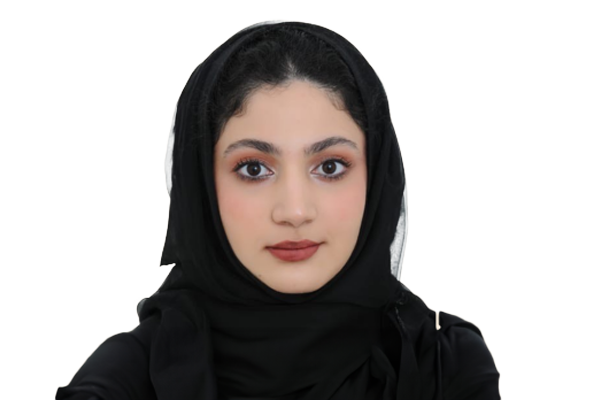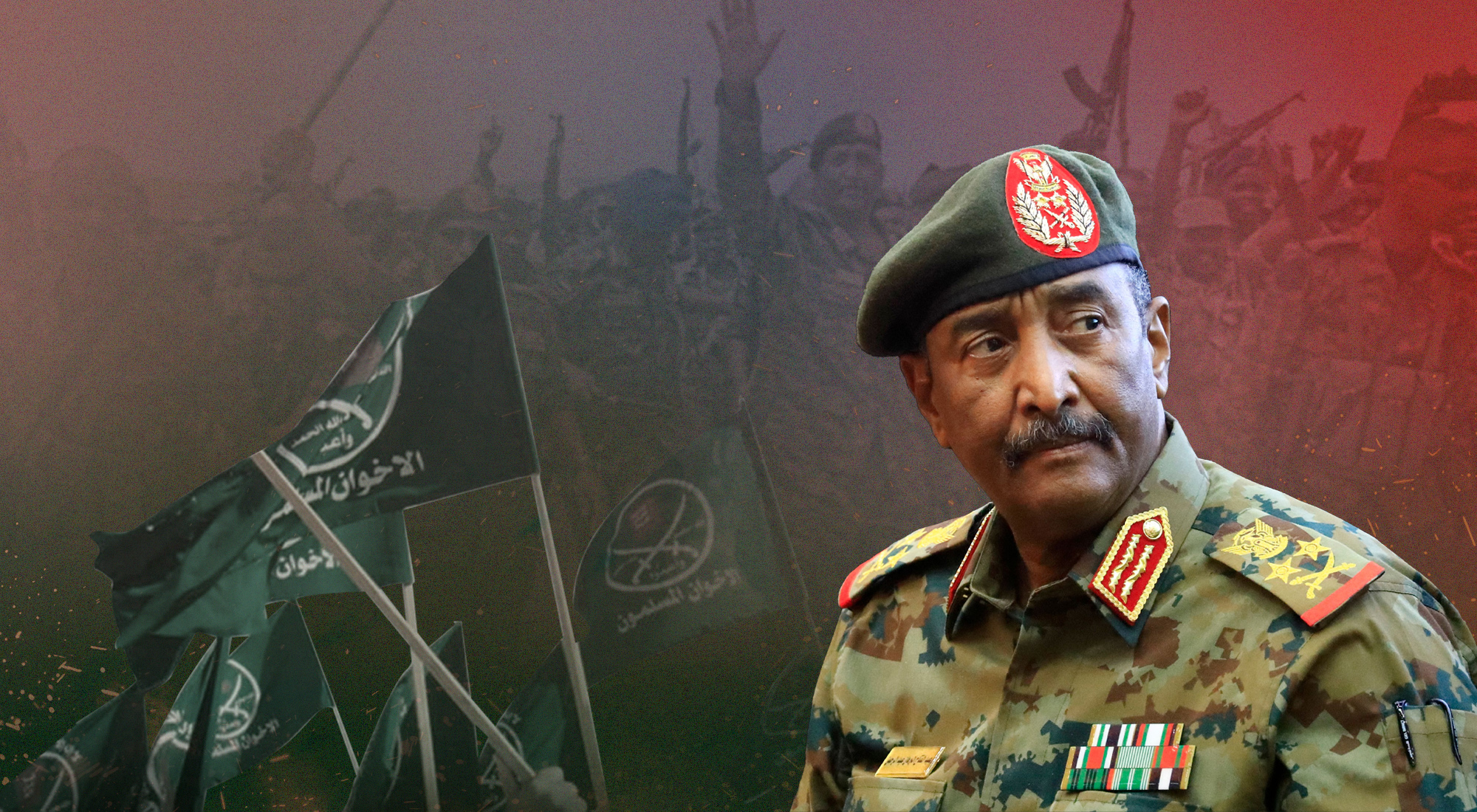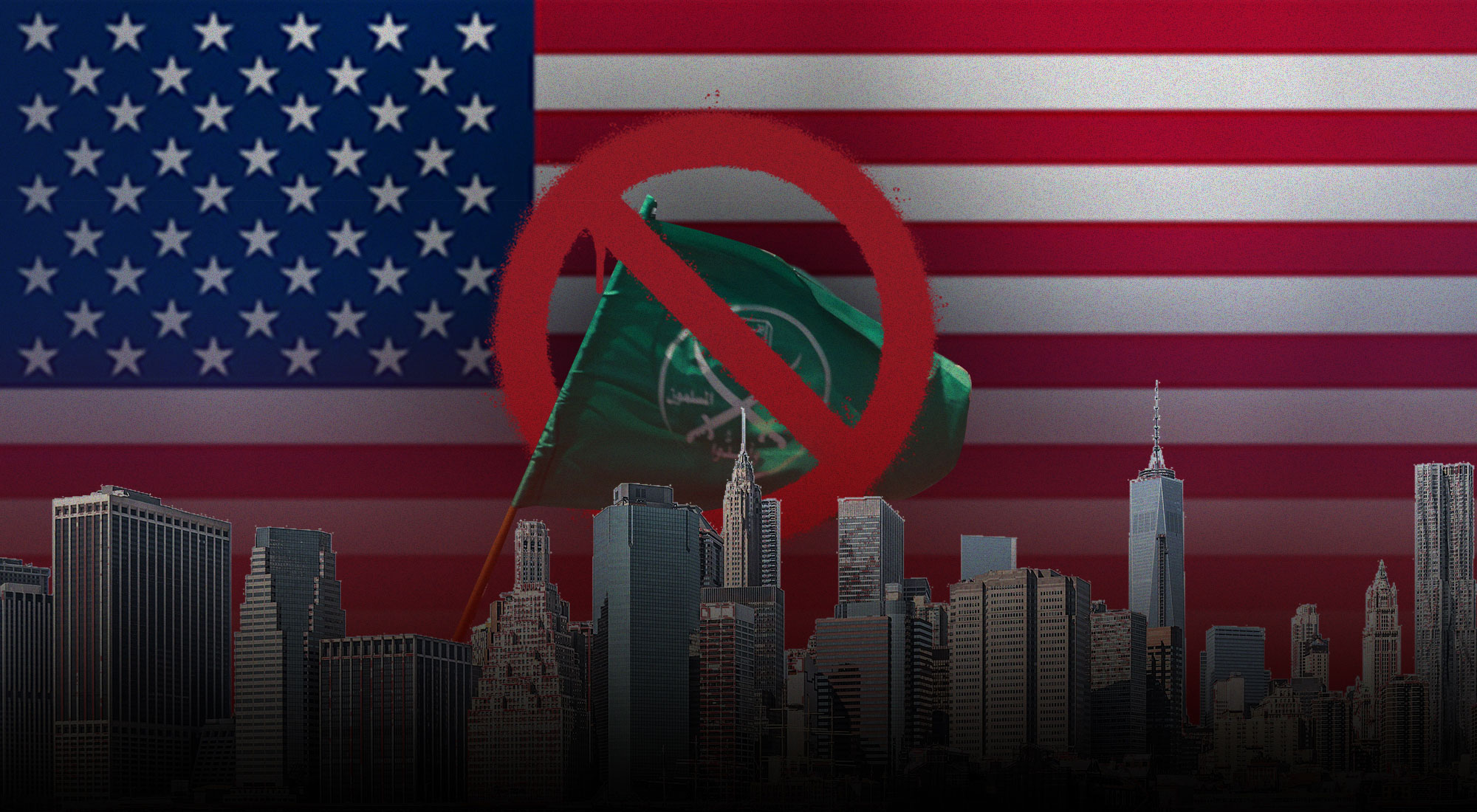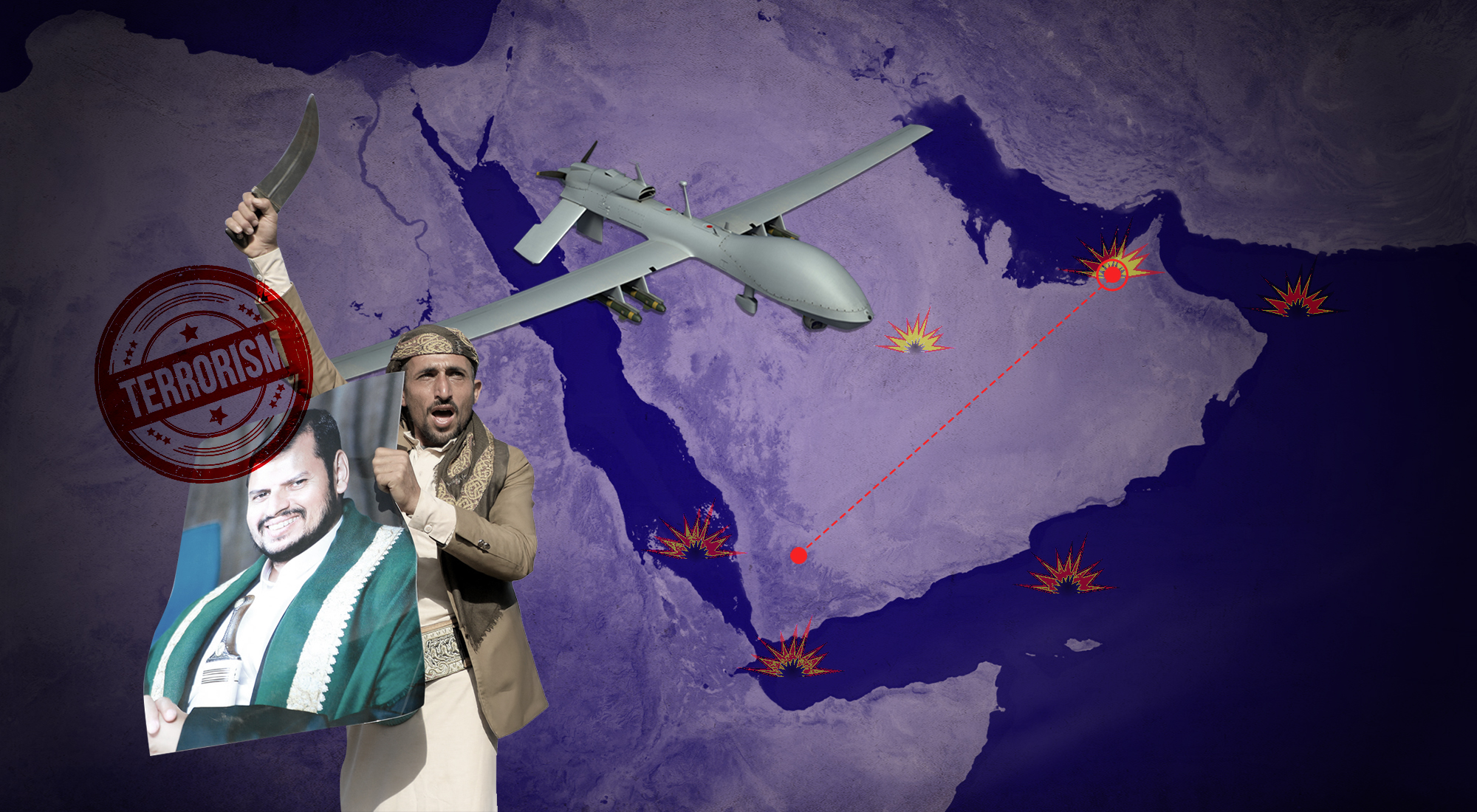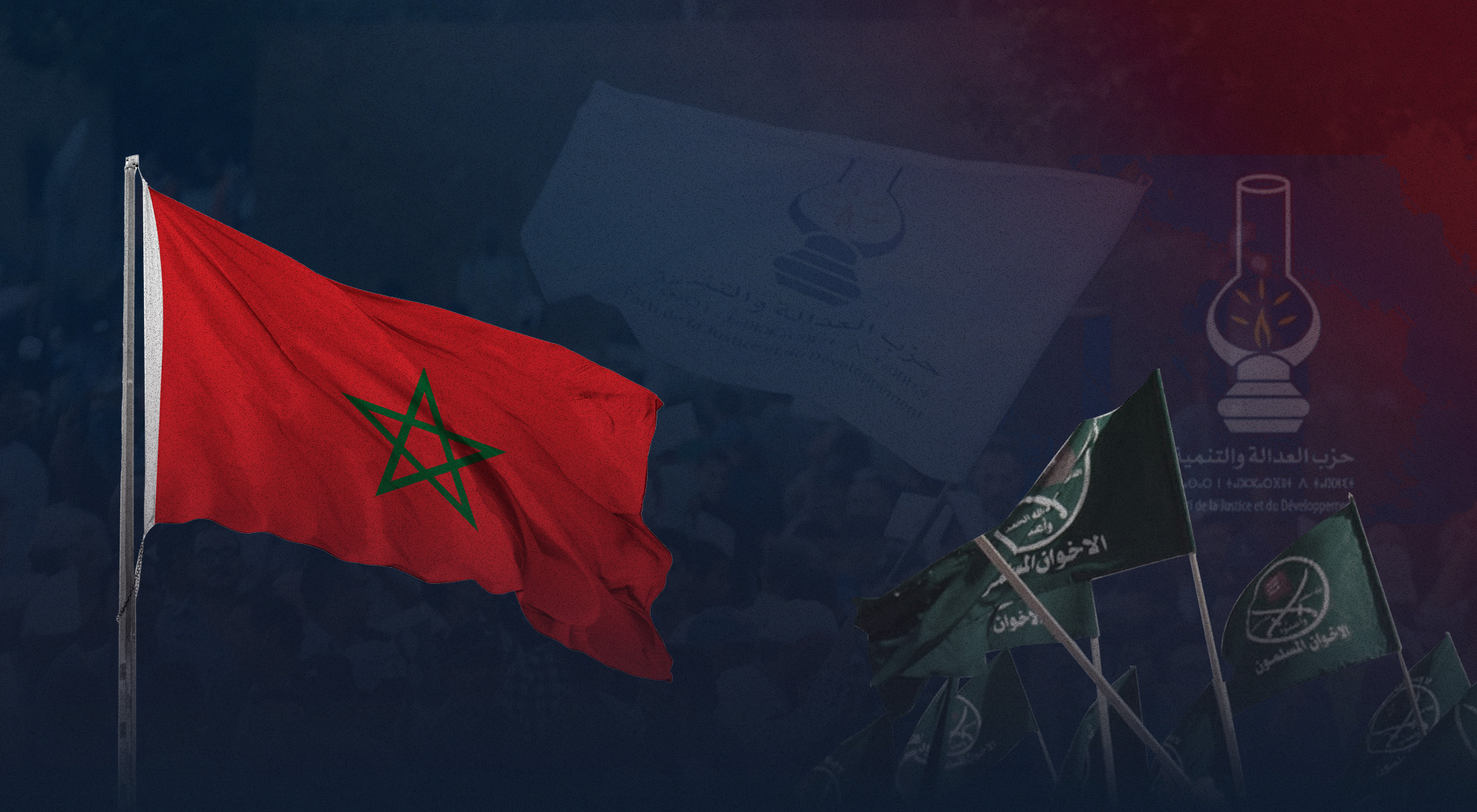In the political arena, the role of identity is crucial in understanding certain decisions and how and why people make them. The way populations categorize themselves and others is also vital to understand sectarianism, commonly defined as “fanaticism for a group of people affiliated to a religion or confession, where belonging to it determines the definitions of self-identity,”[1] and often leads to violent conflict. New York University Professor of Politics Kanchan Chandra defines ethnicity as an identity based on characteristics associated or believed to be associated with descent.[2] In regions where identity politics escalate to violent conflict, power-sharing of the various groups is seen as the diplomatic and peaceful way of ending conflict and creating an equal and democratic government.
Both Lebanon and Bosnia and Herzegovina were divided by wars between religious or ethnic groups. The Lebanese civil war of 1975-1990 pitted Christians, Shi’ites, and Sunnis against each other; in the Bosnian war, Serbs, Croats, and Bosniacs (Muslims) fought from 1992-1995. To de-escalate ethnoreligious tensions, sectarian power-sharing was implemented post-war, but because of weak central governance, corruption, and pre-existing discrimination, this arrangement has resulted in further sectarianism, segregation, and conflict.
The illusion of equality
While Lebanon and Bosnia and Herzegovina are technically parliamentary democracies, they both represent “consociational” countries. Political scientist Arendt Lijphart introduced the term “consociation” in the late 1960s to describe states that have core divisions along ethnic, religious, or linguistic lines, but which stay together because of an agreement between each group’s elite class.
In Lebanon, the three major political positions are split among sectarian lines, with the president always being a Maronite Christian, the prime minister a Sunni, and the speaker of the house a Shi’ite. The 1926 Lebanese constitution, which saw a shift from French direct rule to limited indirect rule, intended that each sect be represented proportionally, and the National Pact of 1943, an informal agreement that has been revised many times,[3, 4] reinforced this idea. In 1989 the Arab League appointed a committee to negotiate an end to the Lebanese Civil War. The resulting 1989 Ta’if agreement took the idea of sectarian power-sharing between Christians and Muslims even further.[5]
The Ta’if agreement worked to redistribute power among the sects in the public sector, going so far as to include a quota system for first-grade governmental positions in the constitution. However, this quota soon trickled down to even fourth-grade posts. In 2016, for example, 106 people passed the examinations to become forest guards. Because only 17 of the applicants were Christian, however, then foreign minister Gebran Bassil prohibited the guards from officially taking their posts. Similar treatment was seen in the recruitment for the Internal Security Forces (ISF) in 2010. The cabinet decided to hire 10,000 new employees, but only 35% of applicants were Christian, prompting them to start a new recruitment cycle leading to 4,000 additional employees, 3,000 of whom were Christians and the remaining 1,000 Muslims. In 2011, the director general accepted approximately another 2,000 Christian members who were not forced to take the written exams or meet standard requirements such as not having a criminal record.[6] The Lebanese government also heavily funded the Council for Development and Reconstruction (CDR), which was established in 1977 to oversee infrastructure projects related to rebuilding the country. However, Rafiq al-Hariri, a prominent businessman and prime minister between 1992-1998 and 2000-2004, delegated many of the top positions in the CDR to former employees, business partners, and other political elites, and employed relatives and those affiliated with the Christian sect.[7]
Post-war Bosnia is a central state divided into two main units: The Federation of Bosnia Herzegovina (FBiH) and The Republic of Srpska (RS), with the Bosniac and Croats the majority in the former, and the Serbs in the latter. There are also 10 cantons, 143 municipalities, and the Brčko District.[8] The power-sharing between the three major sectarian groups of Bosnia and Herzegovina has manifested itself in the dominance of ethnonational parties and clientelism.[9] The parties in power reward their networks through high positions and money, as seen in the case of Lebanon with the CDR and the public sector. For example, the official bank of the RS, RS Investment and Development Bank (IDB), favors companies owned by elite officials and their families, while the energy minister of FBiH between 2006 and 2010, Vahid Hećo, granted around KM15 million (approximately $8 million) to private businesses owned by those who donated to the ruling parties.[10] Figure 1 shows how the Bosnian public sector distributes disability benefits. Both the FBiH and RS favor war veterans with disabilities instead of civilian victims and regular individuals with disabilities.[11] This favoritism helps sectarian ethno-nationalist parties propagate popular narratives that these veterans are heroes who have been wronged by another sect.
In both Lebanon and Bosnia, the elites exploit the public sector by providing favors to their connections, who are usually from the same sect. Relational clientelism (benefits given outside of the campaign period) exacerbates inequalities in both countries, which are shown through elite benefits and the size of the public sector.[12] This has created societies where meritocracy means nothing.

Figure 1- Personal disability benefits for 100% disability, by status, in the FBiH and the RS (2018).
Source: Obradović Nikolina and Filic Goran Patrick, “Inequality and Welfare State Clientelism in Bosnia and Herzegovina,” Economic Annals 64, no. 223 (2019), p. 83-104.
The hidden segregation of sexism
The illusion behind sectarian power-sharing was that all groups in the country would be treated as equal, however, the system has produced the opposite result because of persistent cronyism and the neglect of other marginalized identity-based groups. The status of women, for example, has not improved post-war. In Lebanon, the first woman to hold a seat in parliament, Mirna Boustany in 1963, was only elected to replace her father after his death, as she was his only child.[13] Only six out of the 128 members of the 2005 parliament were women, despite a quota system existing for sect representation.[14] There is no law or article that is specifically against gender discrimination, yet it clearly exists, according to women who were involved in Lebanese politics.[15] In interviews conducted by Carmen Geha of the Department of Political and Social Sciences at the Pompeu Fabra University in Barcelona, many of the women blamed the poor representation on the cliental nature of politics and the power of sectarian connections. One woman commented that late meetings were a struggle to attend as she had household duties, and that she was afraid to go back home late at night. According to other interviewees, women also faced overall sexism and harassment,[16] with some male politicians using pet names for their female colleagues such as “pretty” and “darling”.[17] Networking, a crucial part of politics, was also more difficult for women, who are expected to balance their public responsibilities, such as attending local events and hosting religious ceremonies, with their traditional duties, such as maintaining a household.
Women politicians in Bosnia face the same predicament as their counterparts in Lebanon. The post-war period was supposed to be a period of progress and healing, but there has been a regression in the number of women in parliament in Bosnia. One reason cited by the Organization for Security and Co-operation in Europe (OSCE), who monitored televised debates and campaign events, is that female candidates were only given 10% of screen time compared to their male candidates.[18, 19] Women were also not given any consideration in the Dayton accords, the treaty that ended the Bosnian war, despite the horrific war crimes perpetrated against them, such as the 20,000 cases of rape.[20] War veterans are given priority in post-war Bosnia, but its victims, and especially its female victims, are given no closure or reparations nor any proportional representation in government.
Segregation and conflict
The restoration of a country coming out of a sectarian civil war should involve closure for the people involved and a cessation of the harmful rhetoric that led to the conflict. Yet sectarian power-sharing in Bosnia and Lebanon has not promoted a unified national identity but intensified the segregation of its people instead.
During the Bosnian war, around 2.2 million people fled their homes, with around one million displaced within the country.[21] This displacement has permanently altered the ethnic makeup of cities around the country. Pre-war, Sarajevo was comprised of 50% Bosniacs; now they make up around 87% of the city’s population. Some of this ethnographic shift is displaced Bosniacs who fled their hometowns during the war returning, but some of it is because Serbs have left permanently.[22] Cities with more sectarian diversity have not fared better in terms of integration. In the city of Mostar, for example, there is a divide between the Bosniacs, who live on the east side of the Neretva River, and the Croats, who live on the west.[23]
There are also cases of mass displacement in Lebanon. Before the war, inhabitants of Zokak el-Blat, an area in downtown Beirut, were mostly Sunni and Christian, but these sects have moved out of the area and have been replaced by a large Shi’ite population. Most of the businesses are run by Shi’ites, and Shi’ite militias provide protection and other services.[24] This sectarian-based living is common in post-war Lebanon. As one businessman put it: “If you have five carpenters who are the right religion, and you need a plumber, but the plumber isn’t the right religion, you get one of the carpenters to do your plumbing.”[25] As seen in Bosnia, there is this clear demarcation of where you live, and thus whom you associate with, and whom you purchase services from. This is how physical segregation turns into psychological segregation, in which people are taught not to affiliate themselves with other sects and to be inherently mistrustful of those who are “other.”
Sectarian leaders often cultivate psychological segregation, as it ensures the creation of sectarian-based blocs, and thus an affirmation of their place in power. One way this is done is through segregated education. The 2002 Interim Agreement on Accommodation of the Rights and Needs of Returnee Children, supported by OSCE and the wider international community, introduced the idea of “two schools under one roof” as a temporary measure in a Bosnia that had just undergone civil war. The intent was for the model to become a stepping-stone to ultimate integration. This integration has still not occurred.[26] Different sects may be in the same physical building, but they learn in different classrooms and study “ethnically correct education”, that is, history that is tailored towards each sect.[27] Textbooks contain exclusionary language and foster the “us” versus “them” narrative. The Serb textbook, for example, includes sections about how the Serbian people were “forced to defend their honor and dignity with weapons,” placing the blame on other groups and maintaining innocence.[28] This normalizes the behavior of sectarian elites; the relatives of the Srebrenica genocide victims, for example, did not receive an acknowledgement or apology until 2004.[29] During the displacement, Croat and Serb regimes, looking to increase their political power, insisted that their people stay in areas under their influence instead of going back to their hometowns.[30] Now, because of a lack of central authority, these local elites are designing the school curricula, leading to a distinct lack of quality control and management.[31]
Educational fragmentation is seen in Lebanon as well. Attempts to centralize the educational system have failed, and only 37% of students are enrolled in public institutions. As in Bosnia, Lebanese public schools have a more civic, secular curriculum, however, with the lack of a diverse student body, these teachings are not put into practice. Public schools in predominantly Muslim towns, for example, usually have a Muslim student body with Muslim staff; the same configuration goes for other sects. Private education has thrived with freedom of education cited in Article 8 of the 1926 Lebanese constitution, allowing private schools to control their curricula These schools, however, are often sectarian.[32] Research on 77 textbooks from religious private Lebanese schools have found exclusionary language, much like the rhetoric found in the Serbian textbooks in the RS. There were constant references to “us” versus “them”, “our faith and their faith”, and other separatist language.[33] Lebanese sectarian politicians, like their Bosnian counterparts, encourage further segregation instead of trying to aim for a unified and integrated country. Students often stay within their sectarian bubbles, unable to leap across the barrier these private schools have forged.
Segregation in all its forms leads to mistrust and hatred towards other sects, fomenting civil unrest. Despite the RS recognition of the Srebrenica genocide, the Serb president of Bosnia and Herzegovina, Milorad Dodik, denies the Srebrenica genocide and has threatened to secede from central institutions.[34] In December 2021, a hundred Bosnian Serbs gathered in front of the state court in Sarajevo to protest both the arrest of seven Serb police officers who were accused of war crimes and an appeals verdict aimed at quashing the conviction of a former army commander who failed to stop the murder of Serb prisoners.[35] Lebanon has seen countless protests, including the October 2021 demonstration calling for the replacement of the judge tasked with investigating the Beirut explosion. The protest, which took place between Shi’ite and Christian neighborhoods, was led by two Shi’ite parties, Hezbollah and the Amal Movement. It was interrupted by gunshots; Hezbollah blamed the Lebanese Forces (a Christian party), and the Lebanese Forces accused the Shi’ites of trying to derail the investigation of the explosion.[36]
Weak and diluted governance
The way in which the education system is handled in both countries reflects how other services are fragmented and diluted, including elections themselves. In both Lebanon and Bosnia, the democratic voting process is marred by clientelism and inequalities constructed by elites, making some sects the winners and others the losers. Electoral clientelism is when elites supply benefits in exchange for votes; another version of this quid pro quo is vote trafficking, in which votes are literally bought and sold.[37] In reality, though, much of clientelism is through ordinary citizens who rely on Members of Parliament for services, offering their vote to MPs as a way to get basic services. “If they need a job, they come to you,” one deputy said. “If they’re pregnant and need to get into a hospital, [they come to you]… It’s everything from A to Z.”[38]. Several elections have been accused of being rigged via gerrymandering, with Beirut being allowed to keep its pre-established borders while the north and south of the country had the size of their Qada’as (administrative units) cut. These uneven constituencies ensure the election of certain elites and the continuation of the client-patron relationship they have with their benefactors.[39] In Bosnia, voters view having someone of their own sect in a position of power to be a guarantee of access to goods and services.[40] Čarna Brković, a lecturer in Cultural Anthropology and European Ethnology at the University of Goettingen in Germany, discovered that this attitude is so pervasive in Bosnia that many people insist work cannot be found without a connection and that “everything is possible, and nothing is possible” based on who you know.[41]
The Lebanese political process does not lead to decisive decision-making, and policymaking is almost non-existent because consensus is almost never reached amidst elite infighting. Sectarian issues are discussed more than other pressing state issues such as corruption, collapsing infrastructure, and poverty.[42] As previously discussed, tight clientele networks allow the same elites to stay in power, with new candidates, such as in the case of female politicians, unable to penetrate “the club” that has been cultivated for decades.
Economic inequality is rampant in Lebanon, with weak state governance worsening the issue. Figure 2 compares poverty rates of various mohafazat (governorates) in Lebanon with their amount of government expenditures. Nabatiyeh is the name of the country’s 5th largest city and the mohafazat it is part of. Located south and inland from the coast, Nabatiyeh is not a wealthy place with 52.57% of its 120,000 citizens existing beneath the poverty line and 11% of households not having access to basic needs. Compare this to Beirut, Lebanon’s biggest city with a population of 1.92 million. In Beirut, the poverty rate is only 5.85%, while 8% do not have access to basic needs. Despite the stark contrast, it is Beirut who gets 16% of public funds allocated to it while Nabatiyeh is forced to make due with 1%.[43]
The mismanagement of government funds affects the daily lives of the Lebanese. In 2015, the inhabitants near the Na’ameh landfill were fed up with the city’s poor waste management and the trash crisis it caused. The landfill was only supposed to be temporary, but after two decades it continued to disturb the lives of those who lived near it. The protests in July gained momentum and escalated from complaints about the landfill to grievances about larger infrastructure failures such as electricity shortages, unemployment, and hyperinflation. Citizens blamed the political system for focusing on sectarian issues instead of better socioeconomic standards of living for all people.[44] The movement was seen as extraordinary in Lebanon as it brought together people of every sect, all of whom were fed up with the endless cycle of sectarian debate and the standstill it caused in the policy-making process.[45]

Figure 2- Government investment expenditures and poverty across Lebanese mohafazat, 1995-2005.
Source: Nisreen Salti and Jad Chaaban, “The Role of Sectarianism in the Allocation of Public Expenditure in Postwar Lebanon,” International Journal of Middle East Studies 42, no. 4 (2010), p. 637-655.
Weak central governance is also a feature of post-war Bosnia, as the fragmentation of the state affects not only the quality of education but general policymaking as well. Much like Lebanon, decision-making is hampered by sectarian divide and the sheer number of ethnonationalist parties; there are 16 parties and two coalitions in the FBiH Parliament and 15 parties in the RS Parliament.[46] The stalemate in parliament allows the same mismanagement seen in Lebanon, and one of the side effects of this lack of government oversight and control is that 57.7% of Bosnia’s official GDP[47] is non-observed. This underground economy is ripe with corruption, shady business practices, and unregulated production; this type of commerce is also almost impossible to tax. Recent survey data from 2011-12 found that 37.9% of the population lives in multidimensional poverty, which includes deprivation in education, health, and/or standard of living.[48] The majority of the population in both FBiH (89.74%) and RS (80%) do not have health insurance, and insurance rates vary wildly depending on region (64% in Posavina compared to 100% in Sarajevo).[49] The varying rates as well as the general lack of health insurance displays a lack of central cooperation when it comes to vital services such as healthcare and contributes to multidimensional poverty in the country.
Continued segregation is causing people to be dependent on their sectarian political elites for protection, safety, and social services that are supposed to be the responsibility of the state. Moreover, sectarian power-sharing is doing the opposite of allowing people of different sects to work together, and is instead rearing suspicion and violence for those not in their sect. The failure of the Lebanese government to act as a cohesive unit has created a power vacuum, which has often been filled by militias. In Zokak el-Blat, examined earlier in this article, militias work with their sectarian compatriots to provide security and social services, undercutting the legitimacy of the Lebanese Armed Forces (LAF) and therefore the state. The absence of a singular, legitimate Lebanese military force creates a tense situation in which sectarian groups hold both political and military power. Parliament tried to address this danger in 1991 when they passed an amnesty law demanding the demobilization of militias. Most of the militias, including Hezbollah, sidestepped the law by rebranding themselves as “political parties”.[50] The Lebanese cabinet tried again to curtail the powers of local militias in May 2008, when they ordered an investigation into Hezbollah’s telecommunications network, which they deemed “illegitimate, illegal and a violation of state sovereignty and public funds.” Days later, members of the militia swarmed West Beirut, leading to 200 wounded and 65 casualties.[51]
Bosnia’s tripartite force system ended in 2003, and a unified defense ministry was formed in 2006 with one defense minister to preside over the army.[52] A multi-ethnic army that represented all Bosnians seemed like an impressive stride towards national unification, however, breakdowns occurred in different regions with most soldiers choosing to join regiments in their region that represented their sect. The problem begins with the country’s segregated neighborhoods, cities, and districts, which affect everything from employment to military regiment diversity. The Čapljina headquarters, for example, is staffed with 70% Croat military personnel.[53] Bosnia’s diverse and unified army might be discernible on paper but not in reality.
How to break the cycle
The post-war Lebanese and Bosnian governments have shown that sectarian power-sharing does not heal war wounds but deepens them, creating a society that cannot move past the past. Rule by identity does not end corruption, clientelism, or government mismanagement; in fact it seems to engender them. Political cliques and militias are not just failing to heal a population that has undergone ethnic cleansing, but profiting from them. The level of mistrust among the citizenry is seen in their participation in the underground economy and in their mounting protests.
Peace treaties in Lebanon and Bosnia have institutionalized sectarian power-sharing, but the cycle must be broken. The inclusion of women, integrated education, and national cooperation regardless of sect is crucial in the health of a nation and state, and showcases a start on both the social and political level of heading towards a future where sect is not the deciding factor when it comes to political rule.
References
[1] Azmi Bishara, “Ta’ifah, Sect and Sectarianism: From the Word and Its Changing Implications to the Analytical Sociological Term,” AlMuntaqa 1, no. 2 (2018), p. 53–67.
[2] Kanchan Chandra, “What is Ethnic Identity and Does It Matter?” Annual Review of Political Science 9 (2006), p. 397-424.
[3] Helen Tannous, “Religious Diversity and the Future of Education in Lebanon,” Mediterranean Journal of Educational Studies 2, no. 1 (1997), p. 21-35.
[4] Carol Hakim, “The French Mandate in Lebanon,” The American Historical Review 124, no. 5 (2019), p. 1689-1693.
[5] John Nagle & Mary-Alice Clancy, “Power-sharing after Civil War: Thirty Years since Lebanon’s Ta’if Agreement,” Nationalism and Ethnic Politics 25, no. 1 (2019), p. 1-8.
[6] Bassel F. Salloukh, “Ta’if and the Lebanese State: The Political Economy of a Very Sectarian Public Sector,” Nationalism and Ethnic Politics 25, no. 1 (2019), p. 43-60.
[7] Bassel F. Salloukh, Rabie Barakat, Jinan S. Al-Habbal, Lara W. Khattab and Shoghig Mikaelian, The Politics of Sectarianism in Postwar Lebanon (London: Pluto Press, 2015).
[8] Roberto Belloni and Francesco Strazzari, “Corruption in Post-conflict Bosnia-Herzegovina and Kosovo: A Deal among Friends,” Third World Quarterly 35, no. 5 (2014), p. 855-871.
[9] Arianna Piacentini, “Trying to Fit In: Multiethnic Parties, Ethno-clientelism, and Power-sharing in Bosnia and Herzegovina and Macedonia,” Nationalism and Ethnic Politics 25, no. 3 (2019), p. 273-291.
[10] Srdjan Blagovcanin and Boris Divjak, “How Bosnia’s Political Economy Is Held Back and What to Do About It,” 2015, https://tibih.org/wpcontent/uploads/2015/10/How_Bosnias_ Political_Economy_Holds_It_Back_And_What_to_Do_About_It.pdf.
[11] Nikolina Obradović and Goran Patrick Filic, “Inequality and Welfare State Clientelism in Bosnia and Herzegovina,” Economic Annals 64, no. 223 (2019), p. 83-104.
[12] Jordan Gans-Morse, Sebastian Mazzuca and Simeon Nichter, “Varieties of Clientelism: Machine Politics during Elections,” American Journal of Political Science 58, no. 2 (2014), p. 415-432.
[13] Samir Khalaf, “Primordial Ties and Politics in Lebanon,” Middle Eastern Studies 4, no. 3 (1968), p. 243-269.
[14] Lina Khatib, “Gender, Citizenship and Political Agency in Lebanon,” British Journal of Middle Eastern Studies 35, no. 3 (2008), p. 437-451.
[15] Dima Dabbous-Sensenig, “Incorporating an Arab-Muslim Perspective in the Re-assessment of the Implementation of the Beijing Platform for Action,” Expert Paper, October 31, 2005, https://www.un.org/womenwatch/daw/meetings/consult/10-review/EP9.pdf.
[16] Ahmed Hamzeh, “Clientelism, Lebanon: Roots and Trends,” Middle Eastern Studies 37, no. 3 (2001), p. 167-178.
[17] Carmen Geha, “The Myth of Women’s Political Empowerment within Lebanon’s Sectarian Power-sharing System,” Journal of Women, Politics & Policy 40, no. 4 (2019), p. 498-521.
[18] Vanessa Pupavac, “Empowering Women? An Assessment of International Gender Policies in Bosnia,” International Peacekeeping 12, no. 3 (2005), p. 391-405.
[19] “Bosnia and Herzegovina General Elections,” OSCE, October 3, 2010, www.osce.org/odihr/74612.
[20] Siobhan Byrne & Allison McCulloch, “Gender, Representation and Power-sharing in Post-conflict Institutions,” International Peacekeeping 19, no. 5 (2012), p. 565-580.
[21] “Comparative Analysis on Access to Rights of Refugees and Displaced Persons,” MHRR, December 2005, http://www.mhrr.gov.ba/pdf/default.aspx?id=283&langTag=bs-BA.
[22] Gruia Bădescu, “Dwelling in the Post-war City Urban Reconstruction and Home-making in Sarajevo,” Revue detudes comparatives Est-Ouest 4 (2015), p. 35-60.
[23] Dinka Corkalo, Dean Ajdukovic, Harvey M. Weinstein, Eric Stover, Dino Djipa and Miklos Biro, “Neighbors Again? Intercommunity Relations After Ethnic Cleansing,” in My Neighbor, My Enemy: Justice and Community in the Aftermath of Mass Atrocity, eds. Eric Stover and Harvey M. Weinstein (Cambridge: Cambridge University Press, 2004), p. 143-161.
[24] Marieke Krijnen and Christiaan De Beukelaer, “Capital, State, and Conflict: The Various Drivers of Diverse Gentrification Processes in Beirut, Lebanon,” in Global Gentrifications: Uneven Development and Displacement, eds. Loretta Lees, Hyun Bang Shin, and Ernesto López-Morales (Bristol: Policy Press, 2015), p. 285-311.
[25] Akram Al Ariss and Yusuf M. Sidani, “Understanding Religious Diversity: Implications from Lebanon and France,” Cross Cultural & Strategic Management 23, no. 3 (2016), p. 4667-4680.
[26] “Two Schools under One Roof: The Most Visible Example of Discrimination in Education in Bosnia and Herzegovina,” OSCE, November 2018, https://www.osce.org/files/f/documents/3/8/404990.pdf.
[27] Gordana Bozic, “Reeducating the Hearts of Bosnian Students: An Essay on Some Aspects of Education in Bosnia and Herzegovina,” East European Politics and Societies 20, no. 2 (2006), p. 319-342.
[28] Pilvi Torsti, “Segregated Education and Texts: A Challenge to Peace in Bosnia and Herzegovina,” International Journal on World Peace 26, no. 2 (2009), p. 65-82.
[29] Anders H. Stefansson, “Coffee after Cleansing? Co-existence, Co-operation, and Communication in Post-conflict Bosnia and Herzegovina,” Focaal 57 (2010), p. 62-76.
[30] Deniz Sert, “Reversing Segregation? The Property Restitution Process in Post-war Bosnia,” Ethnopolitics 10, no. 2 (2011), p. 219-233.
[31] Dijana Tiplic and Anne Welle-Strand, “Bosnia-Herzegovina’s Higher Education System: Issues of Governance and Quality,” European Education 38, no. 1 (2006), p. 16-29.
[32] Hoda Baytiyeh, “Has the Educational System in Lebanon Contributed to the Growing Sectarian Divisions?” Education and Urban Society 49, no. 5 (2017), p. 546-559.
[33] Nemer Frayha, “The Negative Face of the Lebanese Education System,” 2009, http://www.lebanonrenaissance.org/assets/Uploads/0-The-negative-face-of-the-Lebanese-education-system-by-Nmer-Frayha-2009.pdf.
[34] Aleksandar Brezar, “Bosnia’s Biggest Political Crisis for 26 Years Fuels Anguish and Discontent,” December 17, 2021, https://www.euronews.com/my-europe/2021/12/17/bosnia-s-biggest-political-crisis-for-26-years-fuels-anguish-and-discontent.
[35] Irvin Pekmez, “Bosnian Serbs Accuse State Court of War Crimes Bias,” December 7, 2021, https://balkaninsight.com/2021/12/07/bosnian-serbs-accuse-state-court-of-war-crimes-bias/.
[36] “Beirut News: Sectarian Gun Battles Leave Six Dead,” The New York Times, October 14, 2021, https://www.nytimes.com/live/2021/10/14/world/beirut-lebanon-clashes.
[37] Simeon Nichter, “Conceptualizing Vote Buying,” Electoral Studies 35 (2014), p. 315-327.
[38] Daniel Corstange, “Vote Trafficking in Lebanon,” International Journal of Middle East Studies 44, no. 3 (2012), p. 483–505.
[39] Reinoud Leenders, Spoils of Truce (New York: Cornell University Press, 2012).
[40] Kanchan Chandra, “Why Voters in Patronage Democracies Split Their Tickets: Strategic Voting for Ethnic Parties,” Electoral Studies 28, no. 1 (2009), p. 21-32.
[41] Čarna Brković, Managing Ambiguity: How Clientelism, Citizenship, and Power Shape Personhood in Bosnia and Herzegovina (Berghahn Books, Vol. 31, 2017).
[42] Tamirace Fakhoury, “Power-sharing after the Arab Spring? Insights from Lebanon’s Political Transition,” Nationalism and Ethnic Politics 25, no. 1 (2019), p. 9-26.
[43] Nisreen Salti and Jad Chaaban, “The Role of Sectarianism in the Allocation of Public Expenditure in Postwar Lebanon,” International Journal of Middle East Studies 42, no. 4 (2010), p. 637-655.
[44] Carmen Geha, “Co-optation, Counter-narratives, and Repression: Protesting Lebanon’s Sectarian Power-sharing Regime,” The Middle East Journal 73, no. 1 (2019), p. 9-28.
[45] Sami Nader, “Why Lebanon’s ‘You Stink’ Movement Lost Momentum,” October 23, 2015, https://www.al-monitor.com/originals/2015/10/lebanon-civil-movement-protests-violence.html#ixzz7OPdX2OjT.
[46] “Bosnia and Herzegovina – State Level,” OECD, 2004, https://www.oecd-ilibrary.org/governance/bosnia-and-herzegovina-state-level_5kmk17zq70r8-en;jsessionid=FxJc24vTB6X7leDOqnIhNLO3nJEPnW3Loz0EYYqd.ip-10-240-5-79.
[47] Roberto Dell’Anno and Marje Piirisild, “Measuring the Non-observed Economy in a Transition Economy: The Case of Bosnia–Herzegovina,” Comparative Economic Studies 49, no. 4 (2007), p. 609-631.
[48] Michael Pugh, “Rubbing Salt into War Wounds: Shadow Economies and Peacebuilding in Bosnia and Kosovo,” Problems of Post-Communism 51, no. 3 (2004), p. 53-60.
[49] Nikolina Obradović and Mirna Jusić, “ESPN Thematic Report on Financing Social Protection – Bosnia and Herzegovina,” 2019, https://ec.europa.eu/social/search.jsp?advSearchKey=Financing+social+protection+Bosnia+and+Herzegovina&mode=advancedSubmit&langId=en.
[50] Zoltan Barany, “Building National Armies after Civil War: Lessons from Bosnia, El Salvador, and Lebanon,” Political Science Quarterly 129, no. 2 (2014), p. 211-238.
[51] Farah Dakhlallah, “The Arab League in Lebanon: 2005–2008,” Cambridge Review of International Affairs 25, no. 1 (2012), p. 53-74.
[52] Florence Gaub, Military Integration after Civil Wars: Multiethnic Armies, Identity and Post-conflict Reconstruction (New York: Routledge, 2010).
[53] Matthew D. Morton, “Three Hearts in the Chest of One State: The Armed Forces of Bosnia and Herzegovina,” The Journal of Slavic Military Studies 25, no. 4 (2012), p.




